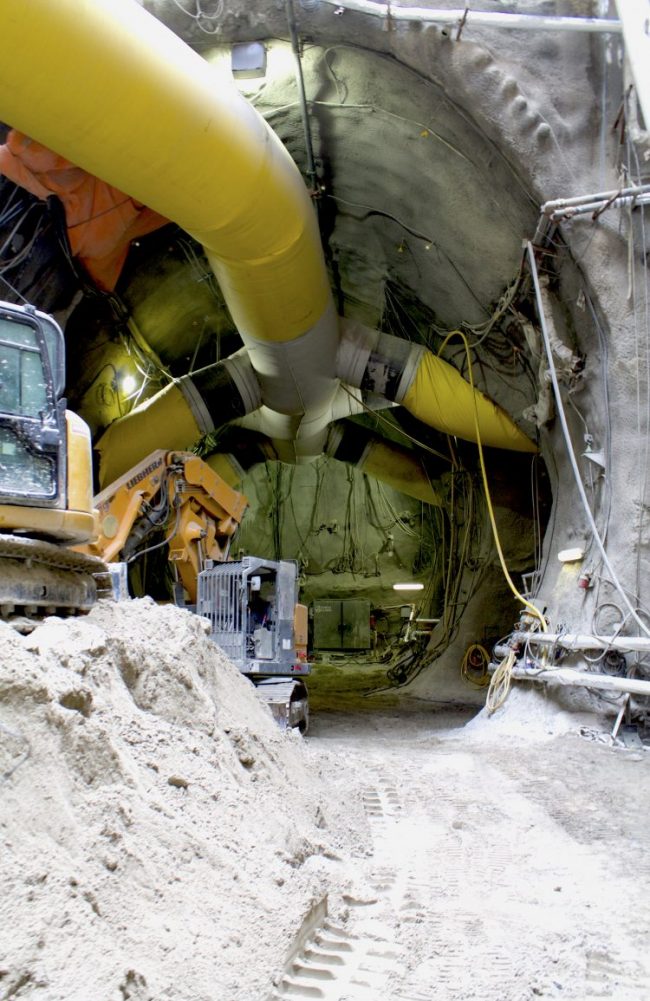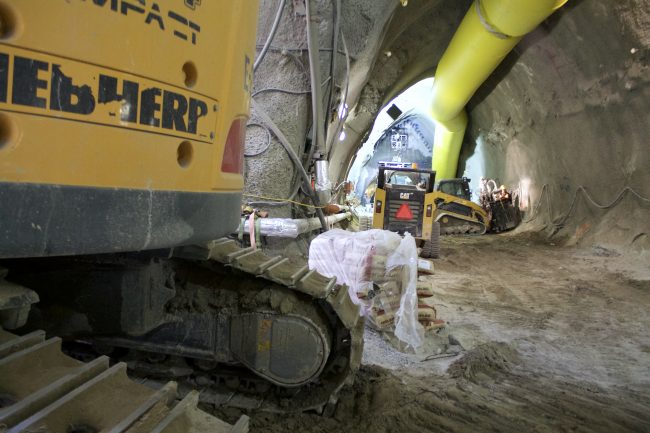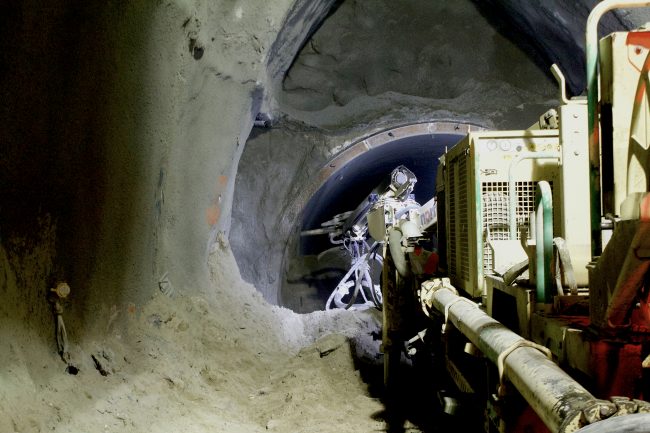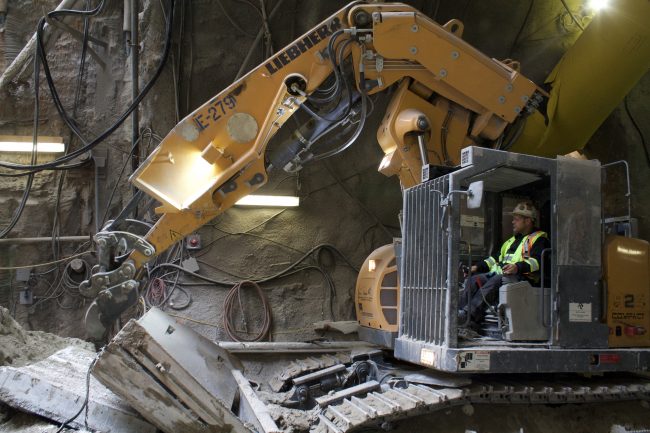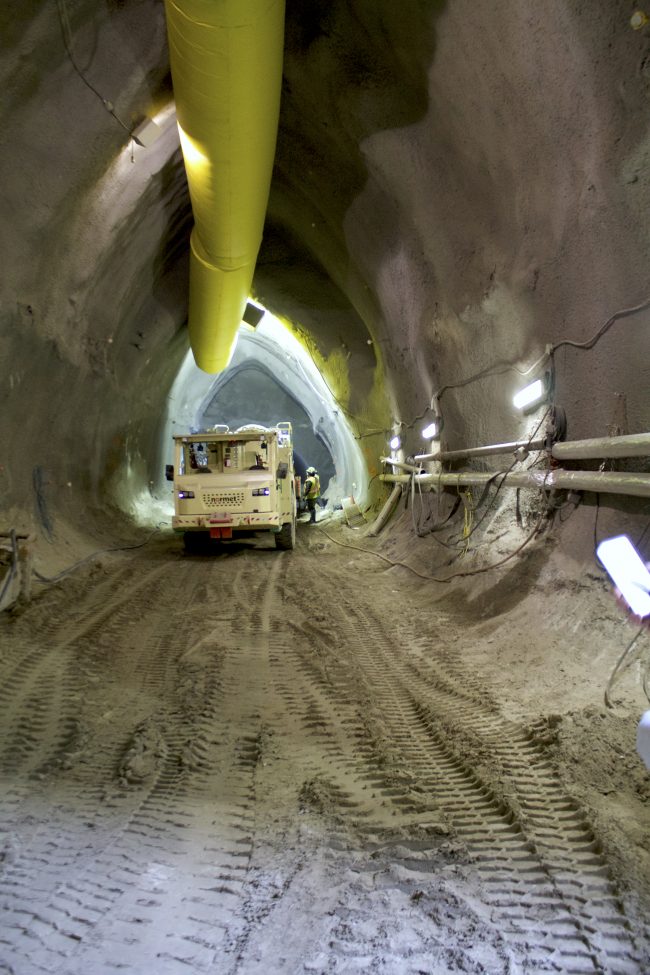
32 metres beneath Toronto: A look underground at the Eglinton Crosstown’s deepest station
By David Kennedy
Construction EquipmentMore than 100 feet under busy mid-town Toronto, construction crews are working 24 hours a day on the country’s biggest transit project
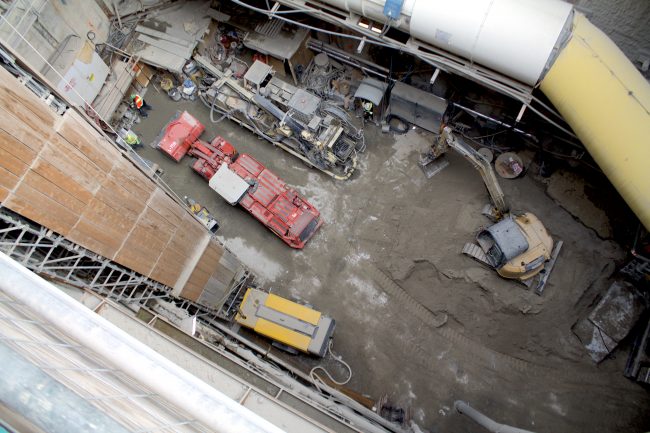
A bird’s eye view of the excavation on the north side of Eglinton Avenue. The cavern ducks under the road on the right side of the image. PHOTOS: David Kennedy
TORONTO—It’s been about two years since four 500,000 kilogram boring machines were hoisted back to the surface after completing the tunnelling for the new Eglinton Crosstown Light Rail Transit project. The huge pieces of equipment have moved on, but construction crews have remained hard at work under Toronto, carving out the 15 subterranean stations that will let the new LRT ferry passengers below one of Canada’s busiest roads.
Work on the 19-kilometre project continues to progress toward its 2021 scheduled completion, with all of the underground stations now under construction. Much of the light rail line will run beneath mid-town Toronto, while the eastern segment will travel above ground between Laird Drive and Kennedy Road. Construction on this nine-kilometre surface section is scheduled to begin shortly, according to Crosslinx Transit Solutions, the construction team responsible for building the LRT.
Underground mining operations at the system’s deepest station, meanwhile, started early this year. One of the two cavern entrances is seen above.
International trade press got a sneak peek at progress at Avenue Station last week during a media event hosted by equipment maker Liebherr Group, which has an extensive range of cranes, deep foundation equipment and earthmoving machinery involved in the Crosstown project.
One of three stations being built using what’s known as the new Austrian tunneling method, or simply the “mining” method, Avenue Station reaches a depth of 32 metres (105 feet) underground at its northwest corner—the deepest point of any station in the system.
Laird and Oakwood stations are also being built using the mining method, which involves excavating a small area and then mining out a cavern below the existing road to connect the station entrances with the existing tunnels.
The dozen other subterranean Crosstown stations are being built using traditional cut and cover tunnelling. That method—not seen here—requires excavating a trench and then covering the dug out area with decking before continuing work below the road.
Nearby Eglinton Station, which will stretch two full city blocks and will have six entrances, is being built using the cut and cover method. It will also connect with Line 1 of the Toronto subway, meaning crews must excavate around and under the existing—as well as active—metro tunnel.
In comparison, Avenue Station will have just two entrances. It will be a turnback station, however, meaning it will house special trackwork to store trains and allow them to short-turn during a closure. To complete the station on time, crews are working on-site on a 24-hour schedule.
As seen above, the construction team is currently spraying shotcrete on the cavern walls. Later in the process, workers will install a final cast-in-place concrete lining to support the completed station.
Mining work is scheduled to wrap up by 2020.
The multibillion-dollar LRT is currently the largest transit project in the country. Early work began in 2011, a decade before the 2021 completion date. The Crosslinx consortium spearheading construction on the project is made up of ACS-Dragados, Aecon, EllisDon and SNC-Lavalin.
At full capacity, the light rail line will be able to carry 15,000 passengers in each direction every hour. It will link up with 54 bus stops, three existing subway stations and three regional GO Transit stations.

